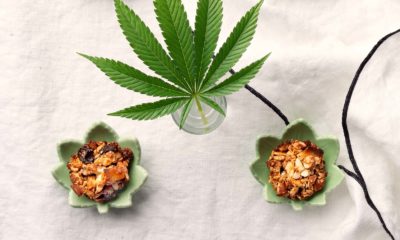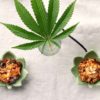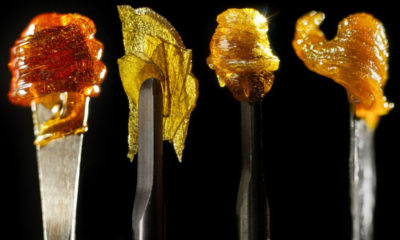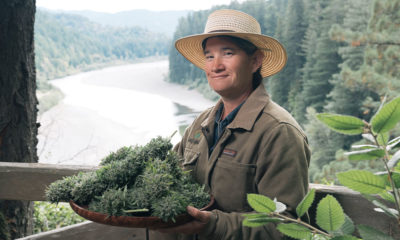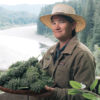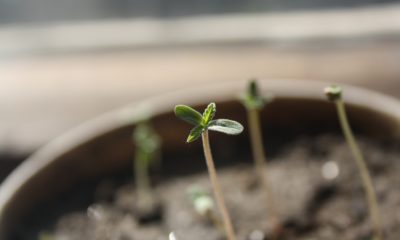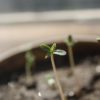Photos Dan Curtis for Cannabis Now
Editing the Cannabis Genome with Ebbu
A cutting-edge research company in Colorado is working on editing the cannabis genome, producing single-cannabinoid strains, massive fields of clones and plants that can produce trichomes on their fan leaves. Is this Dankenstein’s monster or the future of cannabinoid-based medicine?
Inside the drug discovery lab at Ebbu, I peer into a cup that’s about the size of a Big Gulp at 7-Eleven to look closer at the slimy substance within. This cup isn’t holding an unreasonable amount of soda, it’s housing the makings of thousands of genetically identical hemp plants.
“Each of these little green dots is potentially a plant,” says Robert Roscow, Ebbu’s director of genetic research, pointing to the tissue culture in the cup. He explains that Ebbu has plans to grow hemp on an unprecedented scale by taking internodes — small pieces of living hemp stems — and growing them in hormones.
“No one else is doing what you’re seeing,” he says, as I look into the cup, which is just one among two shelves of similar containers.The concept of tissue culturing, a method of biological research that takes stem cells from a plant or animal and places them in an artificial environment, is a method of clonal propagation used in other agricultural industries, but has yet to be commercially applied to hemp or cannabis. That is, until Ebbu started their project in 2013.
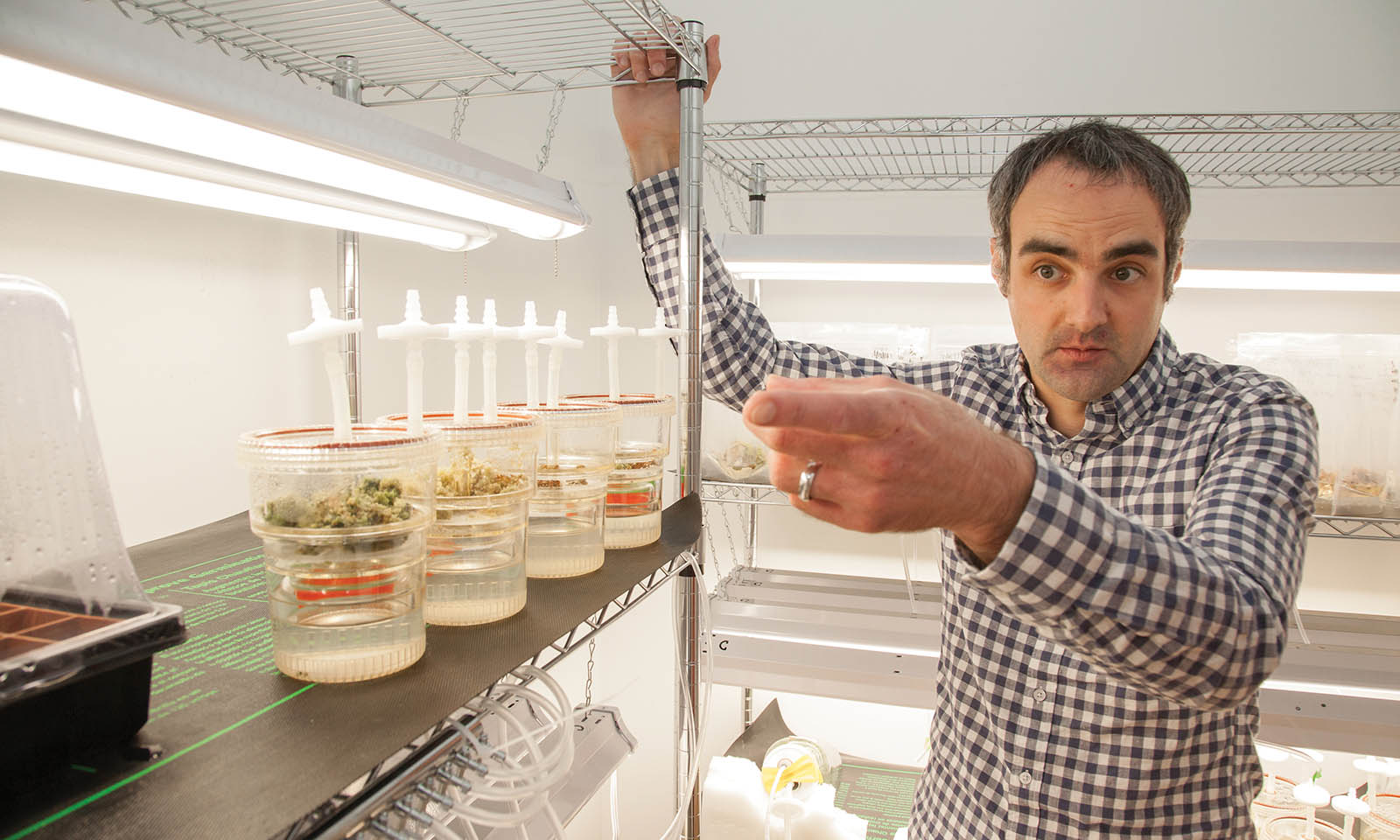
Ebbu Director of Genetic Research Robert Roscow points out hemp tissue cultures within the genetics lab.
“All of these little balls has the potential to become a plant with the correct hormone treatment,” says Roscow, “so there could be thousands of plants actually in this vessel and they’re all clonable.”
Ebbu’s General Manager Damon Michaels explains the potential destiny of the minuscule substances sitting on the shelves.
“We could propagate thousands, if not millions of different clones under our roof and then into a greenhouse,” Michaels says, mentioning that Ebbu plans to use the greenhouse space of Hardy Boy Plants, a partner company also based in Colorado. “Then, from there, we could take those clones and bring them out to large fields and then grow out thousands — if not millions — of plants of that same clone in acreage farms outdoors.”
This tissue culture project for cloning is unprecedented and ambitious, but perhaps most incredibly, it is just one of the experiments taking place at Ebbu that has the potential to change many aspects of the cannabis plant as we know it.
Cannabinoids as a Commodity
In the Ebbu offices upstairs, the company’s CEO and founder Jon Cooper outlines the goals of his company, which is heavily invested in a state of research and development to secure data and intellectual property.
“Our entire approach is asking, ‘What does it take to create mainstream cannabis?’” he says. “Even for myself, one of the challenges that I had getting into this industry was that I didn’t trust cannabis, which really came from the fact that I didn’t know what I was going to get, I didn’t know what my reaction was going to be. That caused a person like myself to really have major trust issues with the plant.”
Cooper explains that, from a pharmacological perspective, the multitude of chemicals inside the resinous trichome heads found on the cannabis flower are known as “dirty compounds” because instead of targeting one cell receptor, they act in congruence to target many at once. This means the exact effects of a given cannabis flower are extremely hard to predict or provide on a consistent basis.
“Really what it represents is chemical chaos,” he says of using the properties found in trichomes for either medicinal or recreational products. “This is a really hard combination and equation across 100-plus cannabinoids and 200-plus terpenes, against 300-plus receptor sites in the body.”
To better understand how cannabis works, Ebbu is examining and restructuring the plant on a cellular level.
“What I care about from the input is how much am I paying for each one of those compounds that just happen to be in that plant and I really don’t care if it’s Blue Dream, Green Crack or Tangerine Haze or whatever it is,” Cooper says. “I care about how much I’m paying for each one of those compounds.”
Because of this directive, Ebbu is in the business of isolating cannabinoids and then testing them on DNA sourced from human cell receptors to understand how they work. The Evergreen, Colorado-based Ebbu lab is also heavily involved with genetic research in order to get the plant to produce more of the compounds they are looking for.
“We take the plant, we tear it apart and then the question is if we can put it back together,” Cooper says. “Mother Nature is interesting from a formulation perspective in that it gives us some clues, but the reality is that everything we put together really is different, because we can get outside of the constraints of what Mother Nature has given us and create something that’s more efficacious.”

Cannabinoids change colors as they go through the refinement process. This CBD sample will be further refined to create products that include CBD isolate.
And in doing so, Cooper explains, Ebbu is focusing on treating cannabinoids themselves as a commodity.
“At the end of the day, from our perspective, the plant is a wildly efficient way of producing complex compounds,” he says. “From a processing perspective, it’s a lot easier if that plant is only producing one compound and so [we want to] kill that concept of these crazy strain names. What if we could just make a CBG-only plant?”
That’s not a hypothetical question. Cooper says he expects this CBG-only strain to be complete in the very near future.
“My vision of the world, for all the inputs, is that this should all just be a commodity,” he says, noting his belief that the majority of the future cannabis market will be based on isolated cannabinoids. “You either need to push towards commodity or you need to push towards craft… You’ll see flower become smaller and smaller and smaller and, I think most people agree, it will probably drop to about 20 percent of the marketplace.”
Genetic Editing vs. GMO
Later, back in the lab, I’m looking at a plant with speckles of fluorescent color visible from an ultraviolet light on the underside of its leaves. This particular plant, I’m assured by all the Ebbu employees, is just a test subject. It includes the DNA from a jellyfish. Ebbu is using traditional genetic techniques that utilize the application of fluorescents to see how the plant has been affected. This is a genetically modified cannabis plant, but Ebbu says it is only using the plant as an internal control. The lab is not focused on genetic modification — like this cannabis plant expressing jellyfish proteins — but rather, genetic editing.
“This is not GMO, this is genetic editing,” Michaels says. “We’re not taking any foreign DNA or RNA and adding it to the plant.”
Roscow clarifies that Ebbu just uses DNA sequences native to the cannabis plant. “Ultimately we’re just making more of the protein that the plant is natively making, cutting and editing the genome,” he adds.
Within the lab, Roscow points out some of the DNA chains Ebbu is examining in order to successfully produce cannabinoid-specific strains.
“We know the genes that are causing the assembly of CBG and we know the genes that are taking CBG and then shuttling them into THC or THC synthase or CBG synthase,” he says. “We can very much go and say, ‘OK, if we want more CBG, the solution there is to reduce the plant’s ability to make the terminal products [of THC or CBG synthase].”
He explains his work to edit the plant’s DNA is similar to closing a road or creating a construction barricade.
“All the traffic goes down the roads that are open,” he says. “It’s the same exact thing, just with molecules and the genetic steps that are shuttling them around.”
In order to edit the cannabis genome, Ebbu is utilizing CRISPR-Cas9 technology, a groundbreaking gene editing technology that was first commercialized in 2012. The science behind CRISPR is complicated. In short, CRISPR uses Cas9, an enzyme that cuts through DNA, in tandem with RNA, a molecule in living cell nuclei that can read DNA. Scientists using CRISPR start by programming the RNA to match the DNA code of the genes they want to alter. Then, the RNA and the Cas9 are injected into the cell.
“Once the RNA and the Cas9 are inside the cell, the two molecules sort of stick together,” the Los Angeles Times wrote, in a 2015 article describing the process. “The RNA guides the Cas9 to a particular part of a gene, and the Cas9 acts like a pair of scissors, breaking both strands of DNA at that specific spot.”
Roscow clarifies the method as we look at computer imaging that displays long strands of DNA sequencing.
“We have a mechanism that allows us to go in and cause a small cut in the genome and so it basically acts as a control, find, delete,” he says. Using this technology, Ebbu is able to take the DNA experimentation process from a computer model to a live plant in about two weeks.
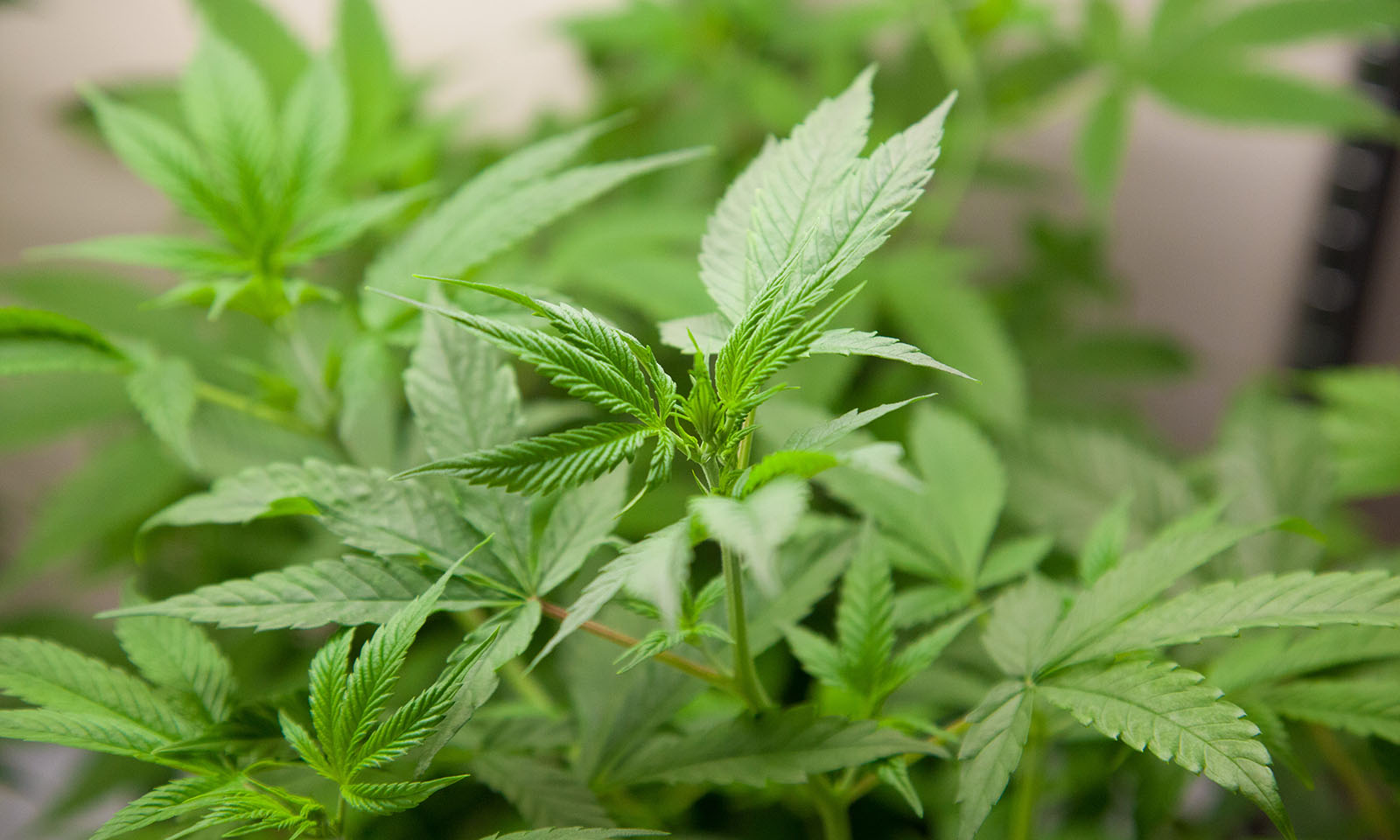
Hemp grows in the Ebbu genetics lab.
“Our ability to do this within cannabis is unique in the space,” Roscoe says. “It’s a technique that’s commonly used in cell culture for medical research and cancer research.”
It’s also used in crop science on plants like coffee for companies like Nestlé, which Roscow tells me produced a report that said they could create about 4 million coffee clones in four months.
And, I ask, is there any chance things could go terribly wrong, along the lines of the plant-eating scenarios depicted in “Little Shop of Horrors?” Absolutely not, he says.
“Being able to do something like that, where it’s not what you designed, it’s such a low likelihood. Instead of going in purposely after one thing, you’d have to — by accident — be going after the perfectly wrong thing to be going after. The likelihood is that it just wouldn’t work. It’s essentially a thousand times more likely to just not work than to have any sort of negative or off-target effect.”
The Pharmacological Approach
After a touring Ebbu’s extraction facilities containing hyper-advanced cannabinoid distillation methods such as supercritical fluid chromatography, I find myself back in another lab, examining a machine that helps Ebbu come up with its product formulations. One of Ebbu’s products, known as Genesis, comes in an oil form and contains a formulation of three cannabinoids and terpenes. I can figure out that two of the cannabinoids are THC and CBD, but the third is kept secret as part of Ebbu’s proprietary blend. Michaels says it is designed to produce an energetic, clear headed “uplifting” feeling.
“It just makes you feel alive,” he says.

Ebbu’s Chief Science Officer Dr. Brian Reid looks for patterns within human cells to determine how they are activated with different combinations of cannabinoids and terpenes.
This product has also been made into “aqua drops” and can be dissolved into water. It’s similar to what Ebbu is using in its non-alcoholic beer through CERIA beverages with the former brewer and creator of Blue Moon Brewing Company, a company which is now a subsidiary of Molson Coors.
To create its product formulas, Ebbu purchases tissue cultures filled with human cell receptors and then tests them against precise blends of cannabinoids and terpenes through a “liquid handling robot.” I watch in the lab as the robot delivers the compound combinations onto plates of cells.
The formulations created using Ebbu’s advanced extraction methods, which utilize liquid chromatography – a method for separating a mixture of chemical substances into its individual components — to isolate individual cannabinoids like THC and CBG.
“With chromatography and formulation, you can break barriers,” Ebbu’s Director of Clinical Pharmacology Jon Martin says.
This method, Martin explains, allows the scientists at Ebbu to see the cell receptors responding to different cannabinoids, such as THC and CBD, and better understand how they work. Observational studies in the lab have demonstrated that different formulations of these compounds can change effects and moods. He says one big question Ebbu is seeking to answer is, “Can cannabis become something new?”
That’s when Roscow jumps in.
“The answer is yes,” he says.
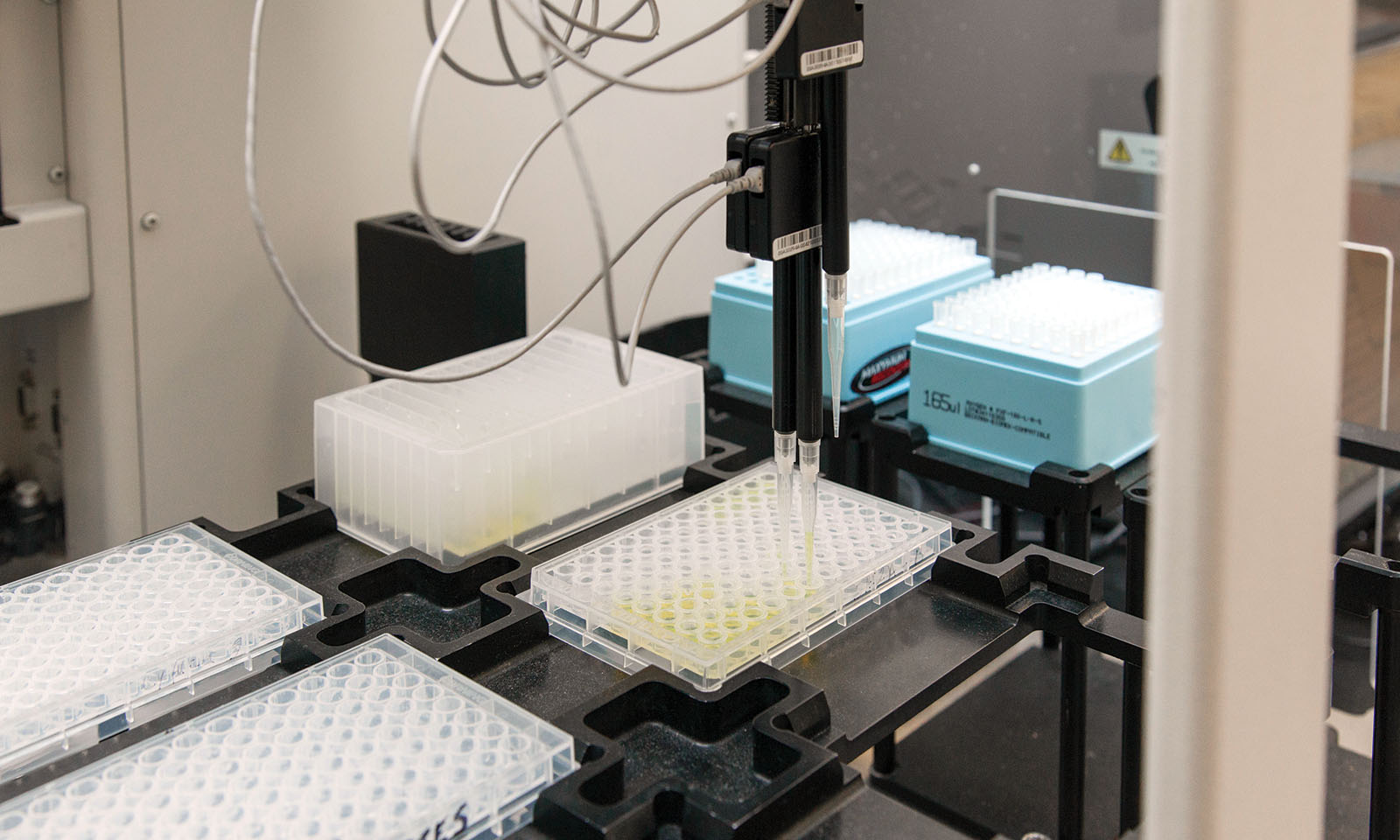
A liquid handling robot applies precise amounts of cannabinoids and terpenes to human cell receptors in order to come up with optimal product blends.
Annual vs. Perennial
In a market dominated by product formulations, Cooper explains Ebbu is all about making the base materials, or cannabinoids, more effective.
One strategy for more efficient cannabinoid delivery is growing cannabinoid-specific strains, such as the CBG strain Ebbu will soon finish — which Cooper points out is legally considered hemp because it contains less than .3 percent THC. The other strategy is finding ways to produce more trichomes, which hold the cannabinoids, on different parts of the plant, rather than only on the flowers.
“What if we could smother the fan leaves in trichome crystals and what if we could do that outside of the flowering cycle using the same basic simple techniques that we’re doing?” Cooper asks. “Well, then you’d be able to increase the output somewhere between two times and 10 times.”
Downstairs in the genetics lab, I get a further explanation.
“We’ve had fan leaves on test plants that are 10 percent cannabinoid content by dry weight, the standard for trim essentially,” Roscow says. “So you could turn the whole plant in a vegetative state into trim.”
If you can get cannabinoids without needing to send the plant into a flowering state, then the base nature of the plant’s growth cycle — a process in which flowers are prized for their resinous trichomes — is fundamentally altered.
“Theoretically, if you prove it works out successfully, then we just changed the plant from an annual to a perennial, which changes everything about cannabis as we know it,” Michaels says. “The cost that is now going into flower production is now cut out overnight. You just keep things in a vegetative state, you just shuck leaves, they regenerate and keep growing back and back. The root cycle will probably go through three or four cycles of that shucking process and then we replant the plant from the clone process again from the mother clipping.”
And all of this could have happened naturally, it just would have taken time.
“All of these are normal processes — there are actually mutant strains that make a lot more trichomes,” Roscow says. “You can end up getting to these same outcomes through natural breeding, but the path to get there would take decades, if not hundreds of years, where you would need to be genotyping every single plant you’re dealing with times millions of each generation. So we’re basically creating the very, very rare things that you could collect with natural breeding over a very long period of time.”
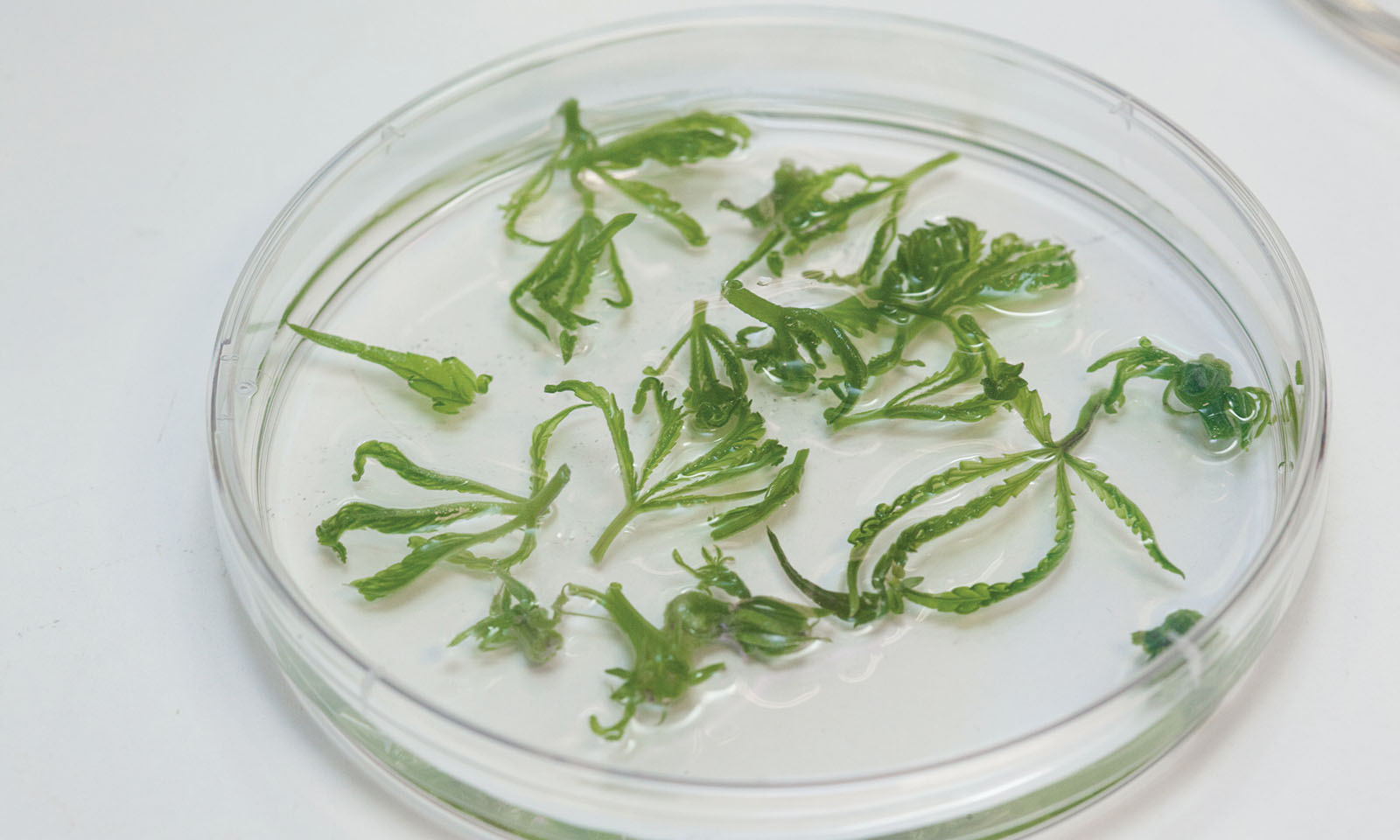
A hemp tissue culture rests in hormones at the Ebbu genetics lab.
All the plants Ebbu is experimenting with in-house are considered hemp, but the lab also partners with marijuana companies in Colorado to look into the potential of dropping the price of the THC compound.
“I think there is a tremendous amount of opportunity on a global scale,” Cooper says of the future, while returning to the idea of consistent cannabis experiences.
Following my visit to Ebbu I sample the Genesis drops over the course of a few days and find the blend of 10 mg THC doses, which come on fast and strong after dissolving them in water, does deliver a pretty reliable experience. The high, once I recognize it through regular use of the product, is pleasant and places me in a positive headspace. Songs sound better, nature seems just that much more vibrant and alive. This brings me back to further unwrapping a hypothetical question Cooper asked himself at the beginning of my day-long tour.
“How do I make a Coors Light of cannabis? How do I make a consistent product that I would be willing to consume?”
TELL US, are you curious about gentically edited cannabis?
Originally published in Issue 32 of Cannabis Now. LEARN MORE






